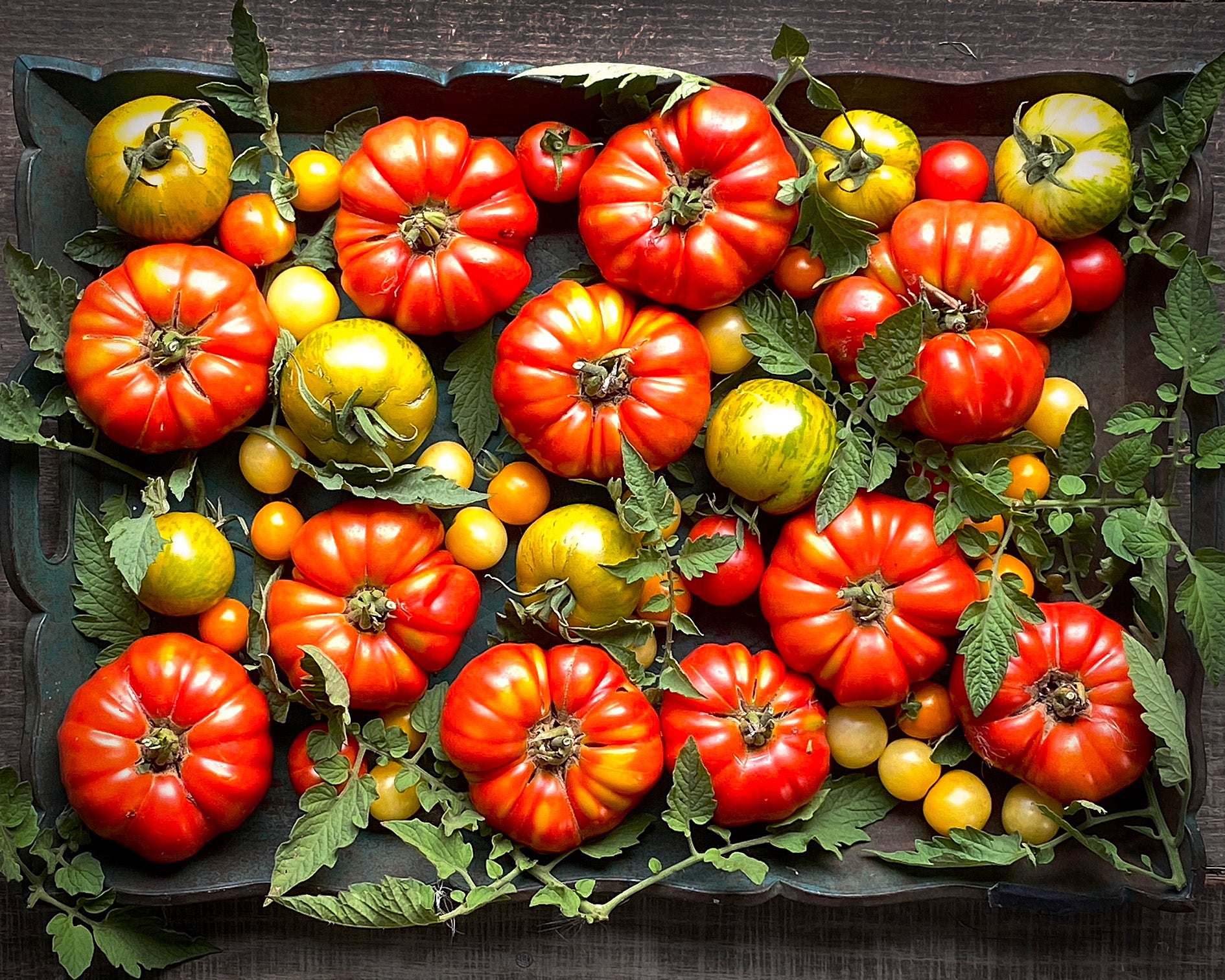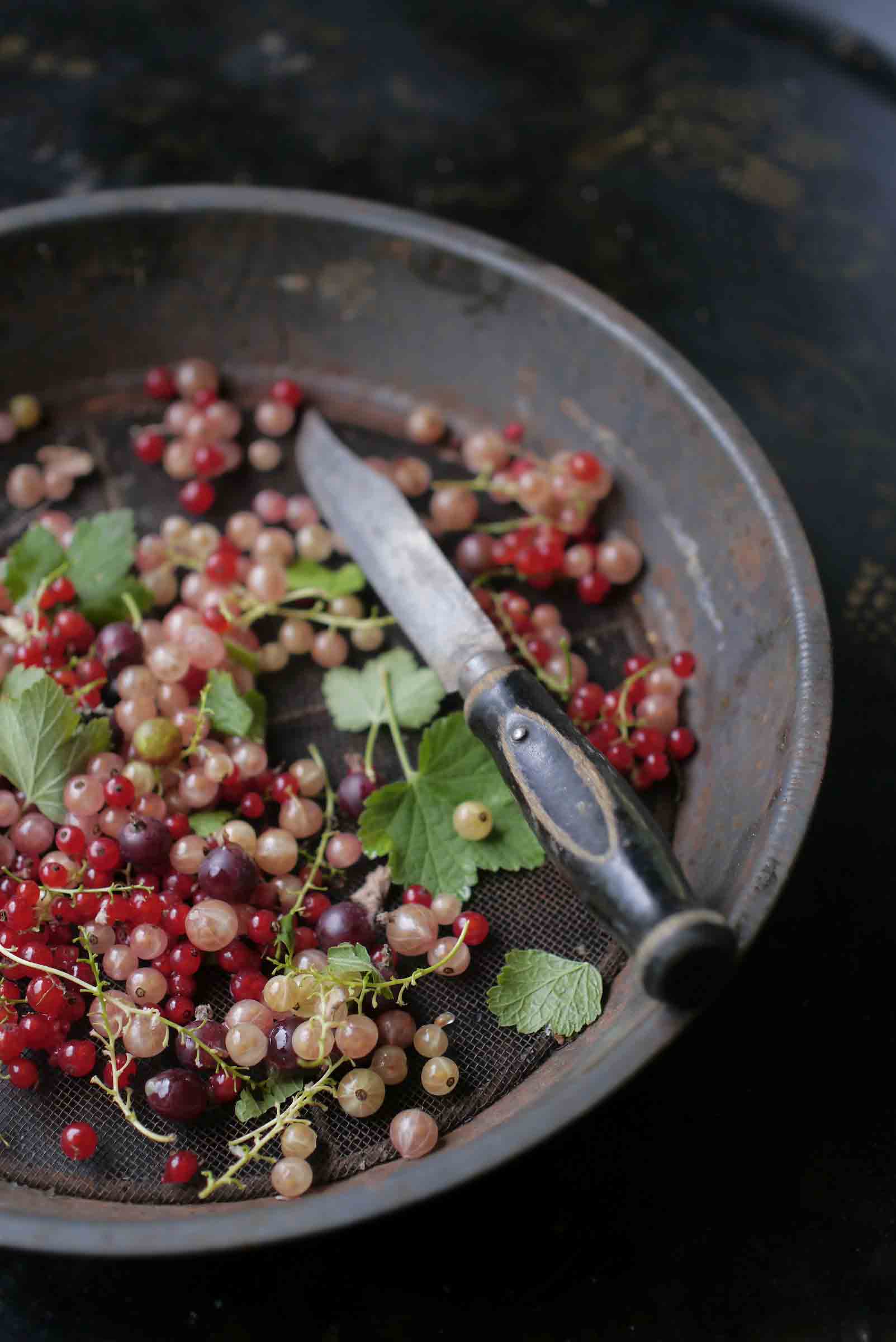The slow fruition of all the heat-longing solonacea, who sulked through June’s cool nights, has finally begun to show promise, as clusters of Sun Gold, Lemon Drop, and Black Cherry tomatoes have emerged jewel-like on sprawling indeterminate vines, and peppers and eggplant are standing tall like fat hat pins above inter-planted lettuce.
It’s been quite a star turn for tomatoes in particular on the farm this season. No blight, no gummy end rot, just loose, far-reaching tangles of sweet fruit splattered across the fencerow in the orchard. Their sprawl and vigor has been almost unseemly, shaming the rest of the farm with an insatiable appetite for sun and sweetness.
Tomatoes can make or break a farm season. When you’re left without, like we were two years ago when late blight was early and pernicious, you almost want to strike the set and start a mushroom farm. Your CSA members, faced with a bleak, tomato-less summer, solemnly line up to collect their brassica shares, like martyrs.
And you end up like an account executive for kale, a huckster of bitter, leafy greens. “Kale salad, kale chips, kale frittata, kale quiche. How many ways can you prepare kale? So many!” you preach to a crowd of circumspect locavores. There’s no doubt kale is the most nutrient-dense leaf out there, with healthy doses of micro-nutrients, anti-oxidants and proteins, but its taste and texture are a challenge to some.
Of course, much of the Tuscan kale had to be replanted after being nibbled down to ungainly stumps by a wily and determined woodchuck, powdery mildew did away with my French cucumbers with one sad, moldering puff, and a flock of ravenous starlings ate an entire hedgerow of aronia melanocarpa berries that were just about to be harvested. Sisyphus, you had it easy!
After last season’s exasperating battle with flea beetles, we shrouded the eggplant and Asian greens with row cover this year; a light, spun fabric made of recycled materials. It foils the beasties by physically blocking their voracious appetites. It seems to have worked. Just when I thought things on Fuss Pot Farm couldn’t get tidier, I resorted to actually tucking in my beds, minus the hospital corners.
If I were half the farmer I’d like to be, I would be keeping an eye on the heirlooms that are thriving and would be saving their seeds to be planted next year. In theory, Darwinian adaptation can be accelerated a few generations by a little attentive intervention. If I were to put theory into practice, the plants that do well on my parcel would be unnaturally selected, carefully saved, and replanted. Next year.
Small organic farming will continue its metronomic give and take, it’s shock and awe. And given one season of magical tomatoes, like this one, the memory of all the blighted, forsaken fruit that came and went before disappears.
Photography by Matthew Benson Foto









Leave a comment